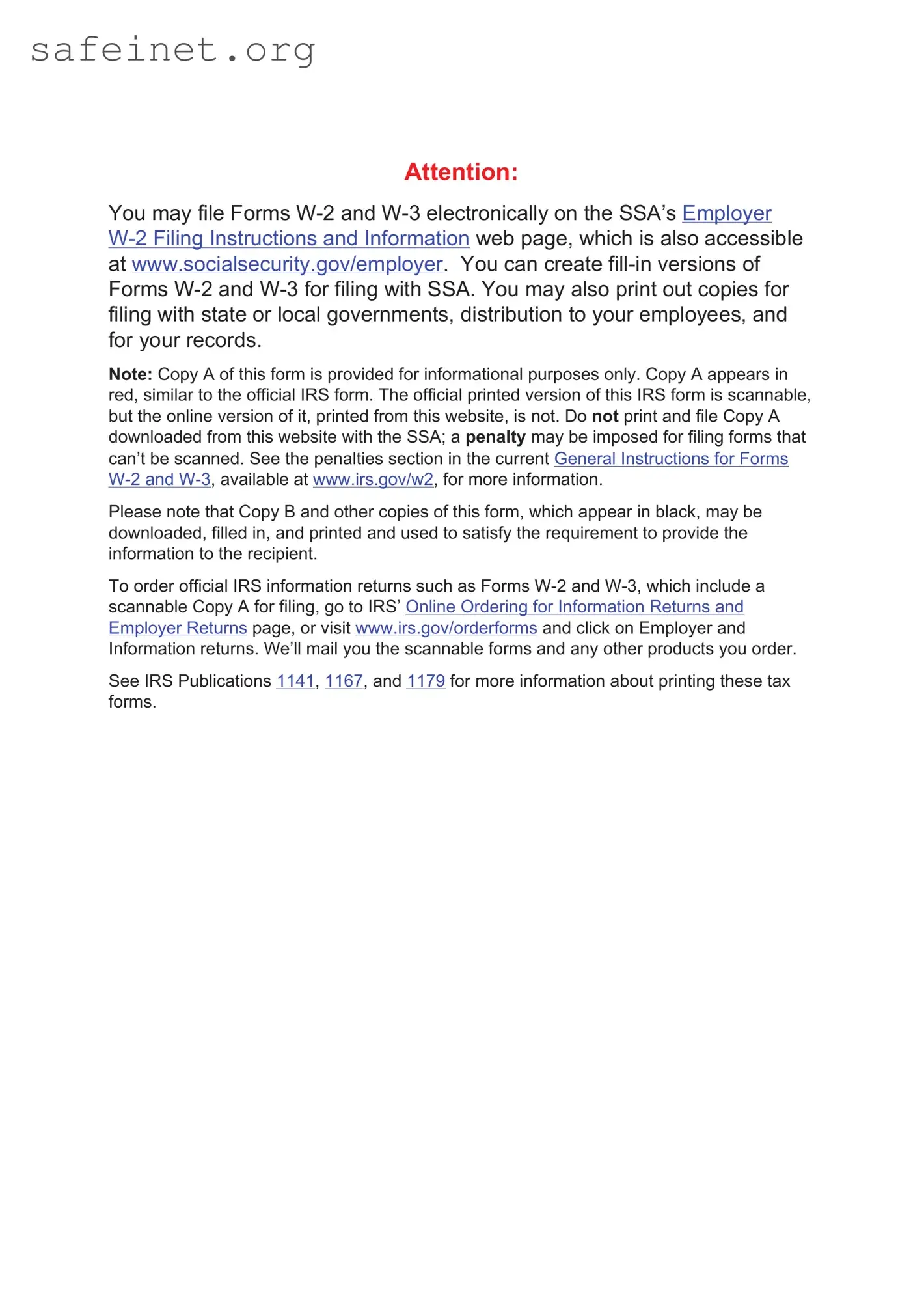What is the IRS W-3 form?
The IRS W-3 form, also known as the Transmittal of Wage and Tax Statements, is a summary form that accompanies W-2 forms when they are sent to the Social Security Administration (SSA). It shows the total earnings, tax withheld, and other payroll information for all employees. In essence, it provides a tally of the W-2s issued by an employer for a particular tax year.
Who needs to file the W-3 form?
Employers who have issued W-2 forms to their employees must file the W-3 form. This includes all business types, whether you're a sole proprietor, partnership, corporation, or nonprofit organization. If you have employees and have reported their wages, you’ll need to ensure that the W-3 form is part of your reporting process.
When is the deadline for submitting the W-3 form?
The deadline for submitting the W-3 form to the SSA is typically January 31 of the year following the tax year for which the forms are being filed. For example, if you are submitting forms for the 2023 tax year, the forms must be submitted by January 31, 2024. However, if filing electronically, you may have a different deadline, so checking with the SSA is always a good practice.
Can you file the W-3 form electronically?
Yes, employers can file the W-3 form electronically. In fact, the Social Security Administration encourages electronic filing because it is faster and more efficient. You can use the SSA’s Business Services Online (BSO) portal to complete and submit your forms electronically, which helps reduce errors and processing times.
What information is required on the W-3 form?
The W-3 form requires information such as your employer identification number (EIN), total wages paid, total federal income tax withheld, total Social Security wages, and total Medicare wages. Additionally, you need to provide your business name, address, and signature, affirming that the information is accurate.
What happens if the information on the W-3 is incorrect?
If you discover that the information on your W-3 form is incorrect after submission, you need to correct it as soon as possible. This can often be done through an amended W-2 form, known as Form W-2c, which also needs to be filed with the SSA. It’s crucial to fix any errors to ensure accurate reporting for both the employees and the IRS.
Are there penalties for not filing the W-3 form?
Yes, failing to file the W-3 form can result in penalties from the IRS. These penalties may vary based on how late the form is filed and can increase dramatically the longer you wait. It's essential to stay on top of deadlines to avoid these unnecessary costs.
Where can I find more information about the W-3 form?
You can find more information about the W-3 form on the IRS website or the Social Security Administration website. These resources provide detailed instructions on completing the form, as well as frequently asked questions and other related topics that might help you ensure compliance.

